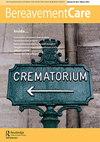Digital legacies with people affected by motor neurone disease: The views, experiences and perceptions of healthcare professionals, specialists and experts for use with bereaved young people
Q3 Nursing
引用次数: 0
Abstract
Abstract Background: Motor neurone disease is a terminal neurological illness with no known cure. It is often referred to as a ‘family disease’ with the ripples causing additional implications for children and young people. As such, little is known about how to best support young people (24 years old and under) (WHO, 2019)) when a family member dies from the disease. One potential solution is through use of a digital legacy whereby videos which document a person’s life, memories and achievements are purposefully recorded by an adult during their illness. However, due to this being an emerging area of research, little is known about whether a digital legacy may support or hinder bereavement for young people affected by the disease. Aim: To investigate healthcare professionals, specialists and experts views, perceptions and experiences of using digital legacies with bereaved young people due to motor neurone disease. Design: A qualitative study underpinned by interpretative phenomenological analysis. Setting/participants: Twenty healthcare professionals, specialists and experts were recruited using a maximum purposive sampling method. Open-ended interviews were conducted in participants’ place of work either over the telephone or by the lead researcher. Ethical approval was granted by a university ethics committee and Health Research Authority (HRA). Findings: Two key overarching themes were identified from the data: perceived benefit and value for bereaved young people using a digital legacy and challenges and barriers for bereaved young people using a digital legacy. Conclusion: A number of potential challenges and considerations were identified. However, the use of a digital legacy was perceived to be a feasible and valuable method of support for young people bereaved as a result of motor neurone disease.运动神经元疾病患者的数字遗产:供丧亲年轻人使用的保健专业人员、专家和专家的观点、经验和看法
背景:运动神经元疾病是一种晚期神经系统疾病,目前尚无治愈方法。它通常被称为“家庭疾病”,其涟漪效应会对儿童和年轻人造成额外影响。因此,当家庭成员死于该病时,人们对如何最好地支持年轻人(24岁及以下)(世卫组织,2019年)知之甚少。一种可能的解决方案是通过使用数字遗产,由成年人在他们生病期间有目的地录制记录一个人的生活、记忆和成就的视频。然而,由于这是一个新兴的研究领域,对于数字遗产是否会支持或阻碍受疾病影响的年轻人的丧亲之痛,人们知之甚少。目的:调查医疗保健专业人员、专家和专家对因运动神经元疾病而失去亲人的年轻人使用数字遗产的看法、看法和经验。设计:以解释性现象学分析为基础的定性研究。环境/参与者:采用最大目的抽样方法招募了20名医疗保健专业人员、专家和专家。在参与者的工作地点通过电话或由首席研究员进行开放式访谈。伦理批准由大学伦理委员会和卫生研究管理局(HRA)批准。调查结果:从数据中确定了两个关键的总体主题:失去亲人的年轻人使用数字遗产的感知利益和价值,以及失去亲人的年轻人使用数字遗产的挑战和障碍。结论:确定了一些潜在的挑战和考虑因素。然而,使用数字遗产被认为是支持因运动神经元疾病而失去亲人的年轻人的一种可行和有价值的方法。
本文章由计算机程序翻译,如有差异,请以英文原文为准。
求助全文
约1分钟内获得全文
求助全文

 求助内容:
求助内容: 应助结果提醒方式:
应助结果提醒方式:


